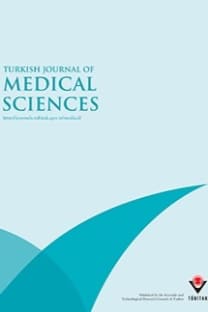Radiation dose to breasts from a cardiac computed tomography angiographyscanogram can be reduced by switching tube position
- ISSN: 1300-0144
- Yayın Aralığı: Yılda 6 Sayı
- Yayıncı: TÜBİTAK
Mustafa Erdem SAĞSÖZ, Rüstem Berhan PİRİMOĞLU
Raja Ahsan AFTAB, Amer Hayat KHAN, Syed Azhar Syed SULAIMAN, İrfhan ALI, Azmi HASSALI, Fahad SALEEM
Timur KÖSE, Sinem ERMİN, Gürsel ÇOK, Ali VERAL
Zhimeng SHI, Hui QIU, Huangang LIU, Honggang YU
Mehmet Sezai TAŞBAKAN, Canan GÜNDÜZ, Abdullah SAYINER, Aykut ÇİLLİ, Burcu Çelenk KARABOĞA, Ayşin Şakar COŞKUN, Feride Durmaz YAMAN, Oğuz KILINÇ, Öznur Kiliç SOYLAR
Saima JABEEN, Sobia KANWAL, Mazhar QAYYUM, Umair FARRUKH, Shahzad Abdul HAMEED
Therapeutic effects of intralipid and medialipid emulsionsin a rat model of verapamil toxicity
Elif ERGÜVEN KAYA, İrfan GÜNGÖR, Fatma AKGÜN ŞAHİN, Sıdıka Hülya ÇELEBİ, Demet COŞKUN
Özgül KARAYURT, Özay AKYOL, Necmiye KILIÇASLAN, Nuray AKGÜN, Ümran SARGIN, Melike KONDAKÇI, Hanim EKİNCİ, Neslihan SARI
Refia Aslıhan DÖNMEZ, Okşan DERİNÖZ, Hayrunnisa BOLAY, Özlem GÜLBAHAR, Selçuk CANDANSAYAR
The relationship of mean platelet volume with retinopathy in type 2 diabetes mellitus
Eray ATALAY, Gül GÜRSOY, Fatih GÜNGÖR, Seyit Murat BAYRAM, Aslı Araz GÜNGÖR
